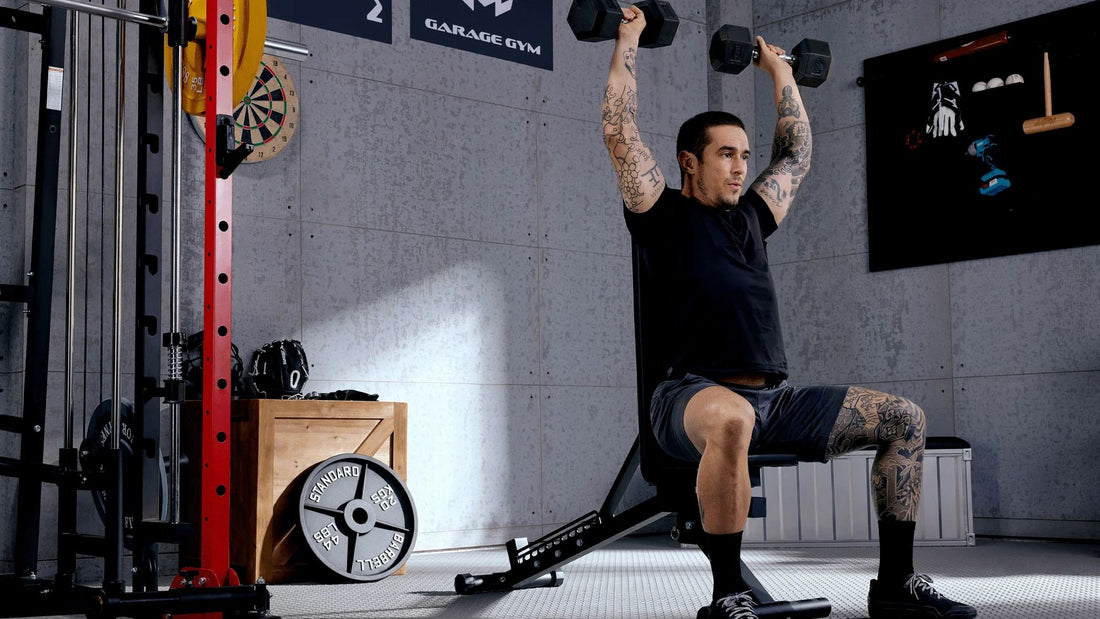
When it comes to building upper body strength, two exercises often come up in conversation: the overhead press and the shoulder press. But what's the real difference between the two? And which one should you include in your workout routine for maximum gains? Let's delve deeper into overhead vs shoulder press to help you make an informed decision.
The first step in understanding the benefits of overhead and shoulder presses is comprehending their mechanics and how they impact various muscle groups. This article will break down these exercises in detail, provide insights into their respective advantages, and help you determine which is better suited for your fitness goals.
Understanding the Mechanics
The overhead press, also known as the military press, is performed by lifting a barbell from the shoulders to above the head with the arms fully extended. This exercise primarily targets the deltoids, triceps, and upper chest. It requires a strong core and stable lower body to execute effectively.
On the other hand, the shoulder press can be performed either seated or standing and typically involves dumbbells. The seated version provides more back support, allowing focus purely on the shoulder muscles. Like the overhead press, it also targets the deltoids, but engages the muscles in slightly different ways depending on the positioning.
Muscle Engagement
The muscle activation between these two exercises has subtle differences. In the overhead press, the entire body is engaged, bringing together upper body strength and core stabilization. This exercise demands unilateral coordination and balance, which helps in improving overall strength and performance.
Conversely, the shoulder press emphasizes the shoulders more directly, making it an excellent isolation exercise. When performed seated, it significantly reduces the involvement of the lower body and core, thereby focusing the effort exclusively on the shoulder muscles.
Benefits of Overhead Press
- Full-Body Engagement: This exercise activates the shoulders, triceps, upper chest, core, and even the lower body to some extent.
- Increased Strength: By distributing the load across multiple muscle groups, it helps in improving both strength and stamina.
- Functional Movement: Mimics the natural motion patterns involved in various daily activities and sports.
Benefits of Shoulder Press
- Targeted Muscle Focus: Ideal for isolating and building shoulder muscles effectively.
- Versatility: Can be performed with dumbbells, barbells, or machines, offering multiple variations and adaptations.
- Stability and Safety: Seated versions provide back support, reducing the risk of injury.
Common Mistakes to Avoid
For both exercises, form and technique are crucial to avoid injury and maximize effectiveness. Common mistakes in the overhead press include overarching the lower back, using momentum to lift the weight, and poor wrist positioning.
In the shoulder press, common errors include lifting too heavy too soon, improper arm positioning, and not engaging the core sufficiently. Paying attention to these details can drastically improve your results and keep you safe from injury.
Both exercises offer unique advantages and can be incredibly beneficial when done correctly. Whether you prefer the compound nature of the overhead press or the targeted focus of the shoulder press, understanding their differences and benefits will help you make the best choice for your fitness journey.

Incorporating These Exercises into Your Routine
Depending on your fitness goals, you can incorporate both exercises into your routine. For a balanced upper body workout, consider alternating between the two. This allows for varied muscle activation and prevents plateauing.
For strength training, the overhead press can serve as a core component of your workout, given its full-body nature. It prepares your muscles for other heavy lifts and functional movements, making it a staple in many strength training programs.
On the other hand, if your goal is hypertrophy or muscle definition, incorporating the shoulder press will help sculpt and define the shoulder muscles. It’s a fantastic addition to any bodybuilding or muscle-specific routine.
Choosing the Right Equipment
Both exercises can be performed using a variety of equipment, such as dumbbells, barbells, or smith machines. Each has its pros and cons, making certain equipment better suited for different goals and fitness levels.
For those looking to build overall strength and engage multiple muscle groups, a barbell is an excellent choice for the overhead press. Meanwhile, dumbbells offer excellent range of motion and symmetrical muscle development for the shoulder press.
The smith machine provides added safety and stability, especially for beginners or those lifting heavier weights. It's excellent for isolating muscles without risking imbalances or form issues.
Conclusion
Choosing between the overhead and shoulder press ultimately comes down to your individual fitness goals, experience level, and personal preferences. Both exercises offer substantial benefits and can be adapted to meet various training needs.
For a holistic approach to upper body strength, incorporating both the overhead and shoulder press into your workout routine is highly recommended. This diversity not only promotes balanced muscle development but also reduces the risk of overuse injuries. So, whether you are lifting a barbell over your head or pressing dumbbells while seated, both exercises will help you build a stronger, more resilient upper body.
Remember, mastering the form and progressively increasing the weight will bring you the best results, all while keeping safety a top priority. Happy lifting!





















